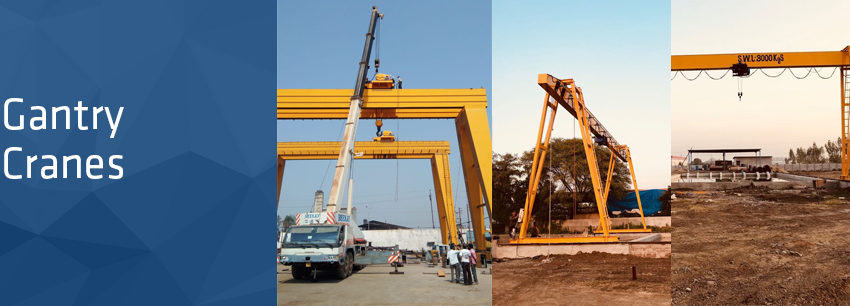If you are in the material handling industry, you must have heard the word Gantry crane a number of times and must be knowing something about it. For others who don’t know about these cranes, we will be discussing everything about it in this article. An overhead bridge crane system is usually referred to as Gantry crane but Gantry crane manufacturers in India say that y cranes and bridge cranes are very different types of overhead cranes. In this article, we will be discussing in depth about the definition of gantry cranes, their types, their practical applications and their design.
What are gantry cranes
Gantry cranes are type of overhead cranes which have a configuration of single or double girder which are supported by legs that move either on wheels or along a track system. When implementing an overhead runway system is practically not possible, gantry cranes are usually deployed in those places. With the help of the hoist trolley, Gantry Cranes are able to lift heavy objects and move both horizontally on a pair of rails that are fitted under the beam. Gantry Cranes are usually deployed in the places where there is a requirement of lifting heavy loads as it specialises in that. Places where goods cannot be brought to the cranes, Gantry Cranes are usually used as they are mobile and can be moved easily. Gantry Cranes are also called portal cranes sometimes as the word portal is used to describe the workspace of the crane.
Different types of Gantry Cranes
There are various types of these cranes available which are discussed in brief below
Full Gantry Crane
The load carrying part of the crane in case of full gantry cranes lies below the gantry and is supported firmly by a beam. There is a complex network of attachments and cables that supports the whole crane structure which is the reason why these full Gantry Cranes can counter attack the torque from the load. All thanks to this mechanism, extremely heavy weights like engines of the ships can be carried using these vranes. The world’s largest Gantry Crane is capable of carrying 22000 tonnes which is deployed in China currently.
Rubber tired Gantry Crane
These carnes have wheels of rubber tires and because of this structure, these cranes do not need a rail for their movements. When it comes to size, these cranes are usually smaller than other Gantry Cranes which is why the rubber tires can easily handle their loads. Rubber tired Gantry Cranes are used when an easily movable crane is required that can be easily carried and navigated through multiple rails.
Workstation Gantry Crane
Workstation Gantry Cranes are used by the small or medium sized factories as these cranes are smaller in size and are able to easily lift lighter loads in no time. These carnes can be moved when unloaded while are stationary when under load which is a big advantage.
Applications of Gantry Cranes
Although these cranes are used and deployed in almost all the industries, Gantry crane manufacturers say that they get orders mostly from Shipping industries, Automobile industries, Warehouses manufacturing industries and construction sites.
Shipbuilding industry
In the shipbuilding industry, the most deployed cranes are the Gantry Cranes as these industries require a lot of heavy weight lifting to be done in the sites which is only possible using Gantry Cranes.
Automobile industry
Automobile engines are comparatively lighter and there are cranes which can be deployed for lifting those weights. The cranes must be such which can help in lifting those light weights with ease and can work in lesser space as well
Warehouses
Warehouses demand lifting of heavy weights all the time and Gantry Cranes are extremely helpful in such scenarios. This is the reason Gantry Cranes are available and deployed at almost all the warehouses.
Manufacturing industries
Manufacturing units require lifting of weights that are lighter hence Gantry Cranes which are small in size are usually deployed in manufacturing units.
Construction sites
In construction sites, Gantry Cranes are usually deployed as they demand lifting heavy loads and carry materials present in that area.
Design considerations for Gantry Cranes
Gantry cranes do not rely on building supports and have extremely flexible designs. If you want to deploy a Gantry crane in your facility, factors such as Indoor and outdoor use, nearby motor or foot traffic, Fixed and rotating axle end trucks, power delivery and crane speed must be considered as the designs might be different based on the area and the location of application of gantry cranes

